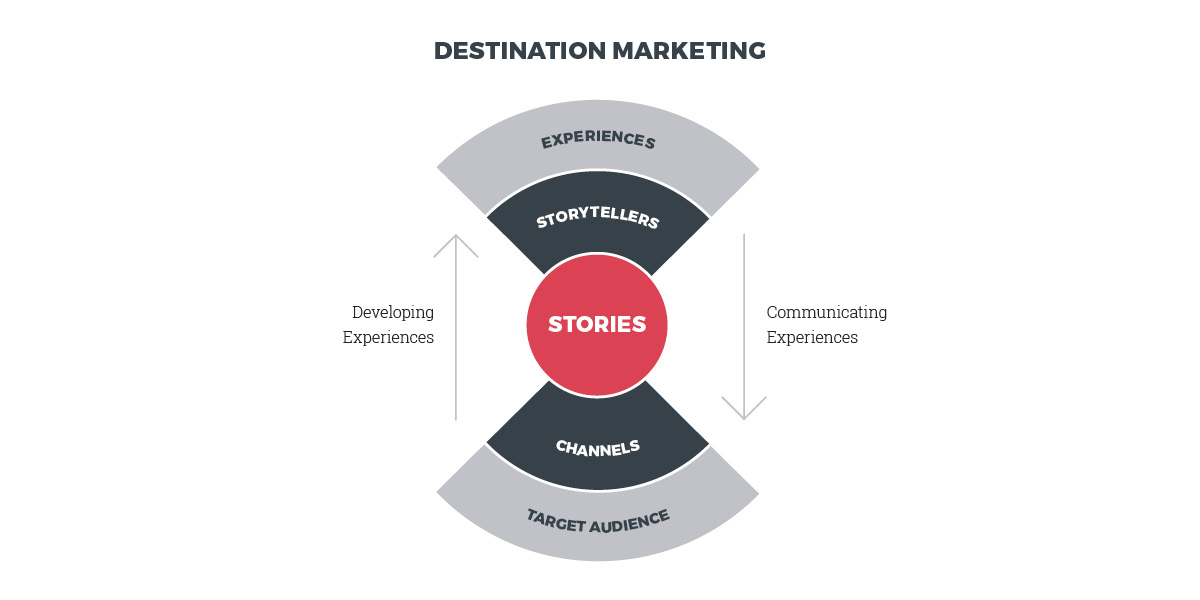The chart above is our framework for Destination Management and Marketing. It’s the result of everything we’ve learned by working with hundreds of DMOs around the world.
Over the next weeks and months, we’re going to use this chart as a way to present what a modern DMO does and how it does it. We will dive deep into each section and show best practices. We’re also proud to introduce a new product, our Destination Assessment, that will comprehensively evaluate all aspects of your destination, help you benchmark your DMO against others, and identify concrete areas of improvement. (Please contact our team to learn more.)
Now let’s quickly walk through the chart.
At the centre of the chart sits Storytelling, because the best way to market a destination has always been through stories. Traditional ads are often stories unto themselves. Travel shows on TV tell stories and stories are also how people share their travel experiences with each other, via social media.
On the top of the chart, are Experiences and on the bottom sits your Target Audience. Because that’s what a DMO does: it defines its target audiences and sources the right experiences in order to persuade people to travel.
People and organizations are Storytellers who turn experiences into stories. This is where it gets really interesting these days. In the old days, the DMO was pretty much the only storyteller who looked at the experiences the destination offers. But now everybody can be a storyteller.
The final section of the chart are Channels. They are the ways and places the stories get told. This can be through word-of-mouth, traditional channels, online channels or social media.
In order to create the right marketing strategy for your DMO, it is important to define your target audience in the right way, match the right experiences to the market, and then find the right storytellers to create stories about those experiences and have them share those stories in the right channels.
And since you as a DMO, aren’t necessarily the most important storyteller anymore, managing the destination experience is more important than ever. Because the only way to control the stories that are told, is to manage the experience.
Over the coming months, we’ll be taking a closer look at the details of our destination management model, so stay tuned.
Next post in this series: The Destination Management and Marketing Model part 2: Assessment
We have created an assessment for destinations based on our model that shows priority areas for your organization’s development. Click here to contact our team and to establish a benchmark for your own destination.









This is a superb DMO model for the digital era – I’m teaching this to my 4th year undergrad students in Tourism and Technology at TRU in Kamloops. Thanks, William! – Peter
Great to hear, Peter! Thanks!
So who made the model__ was it william Bakker
Yes, but with the help of our team.
Hi,
My name is Dr von Solms and I am a senior lecturer at the University of Mpumalanga in South Africa. I have a full few student that are doing research on destination marketing and branding. You mention an assessment for destinations based on your model that shows priority areas for your organization’s development. If possible can I have a copy? We are doing research on the marketing of our province in light of South Africas 2030 Tourism Master Plan.
I couldn’t find an email address, so I am sending a message.
If you have questions, please let me know.
Hello Dr. von Solms, thank you for writing. The destination assessment was a paid client service that has now been discontinued. However, the model still holds true, and you are welcome to review and quote our articles about this. All the best.
– David